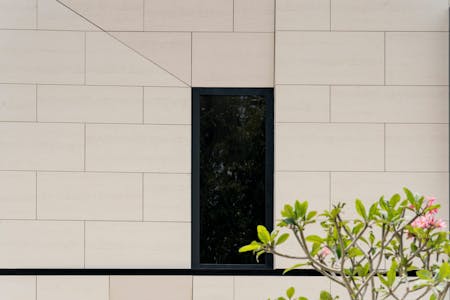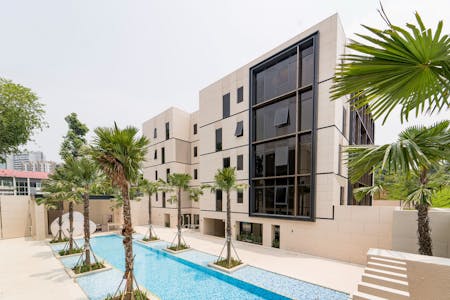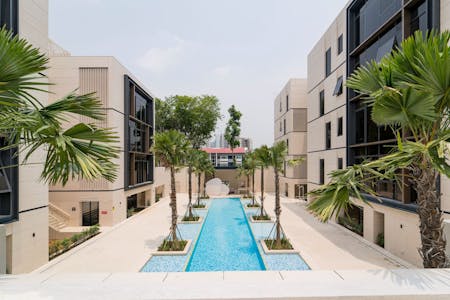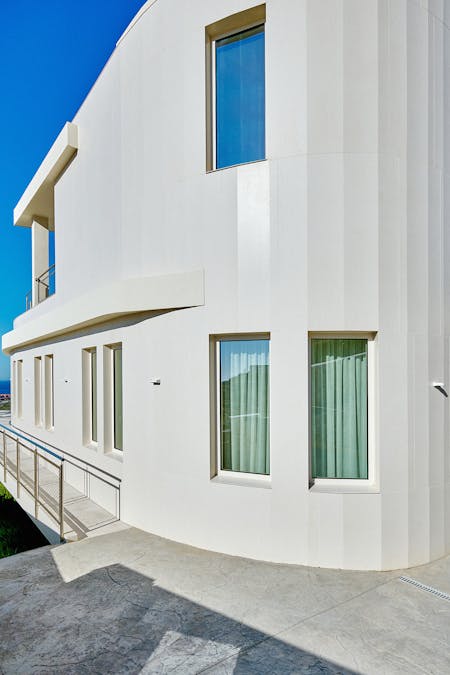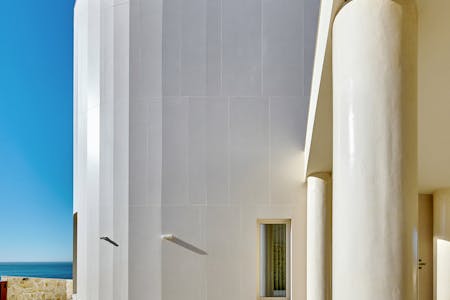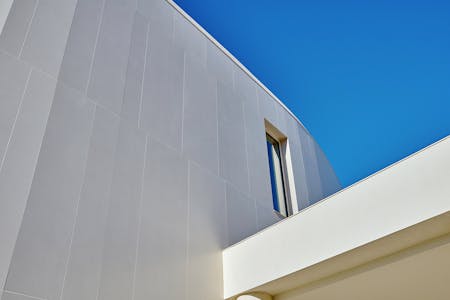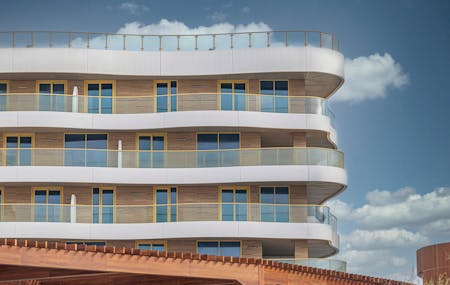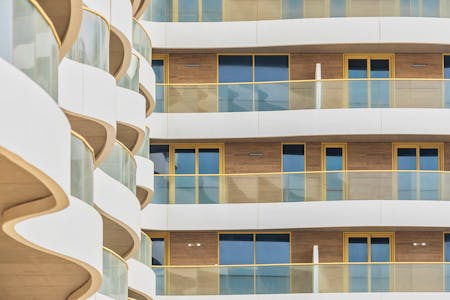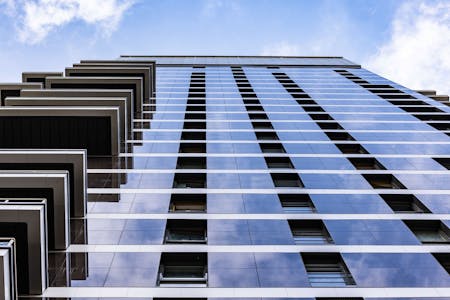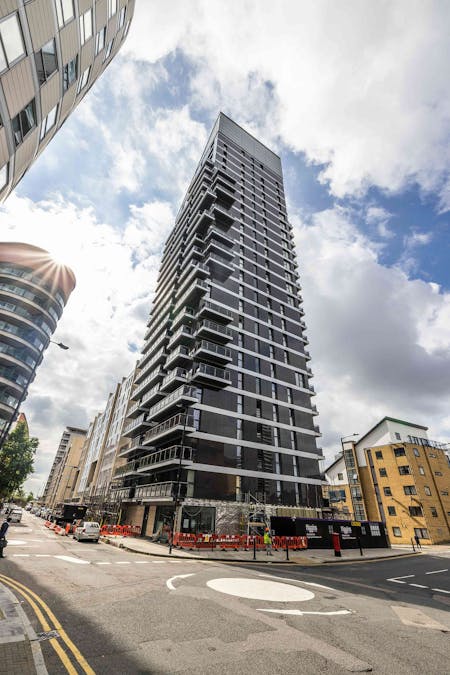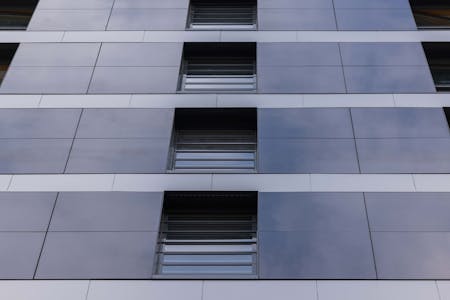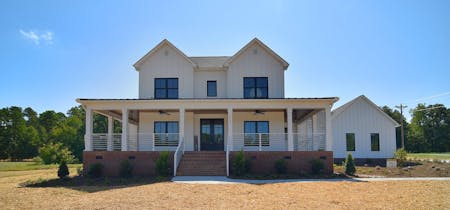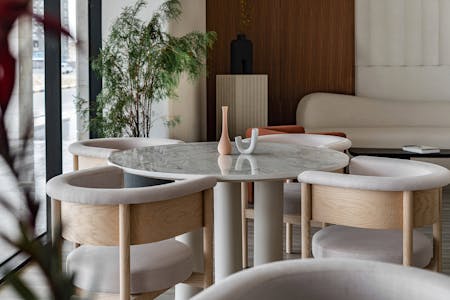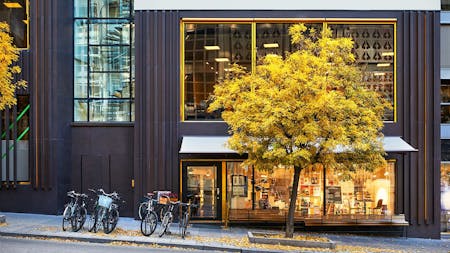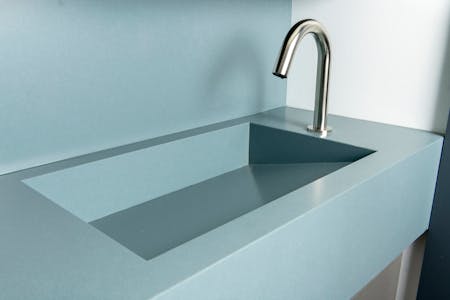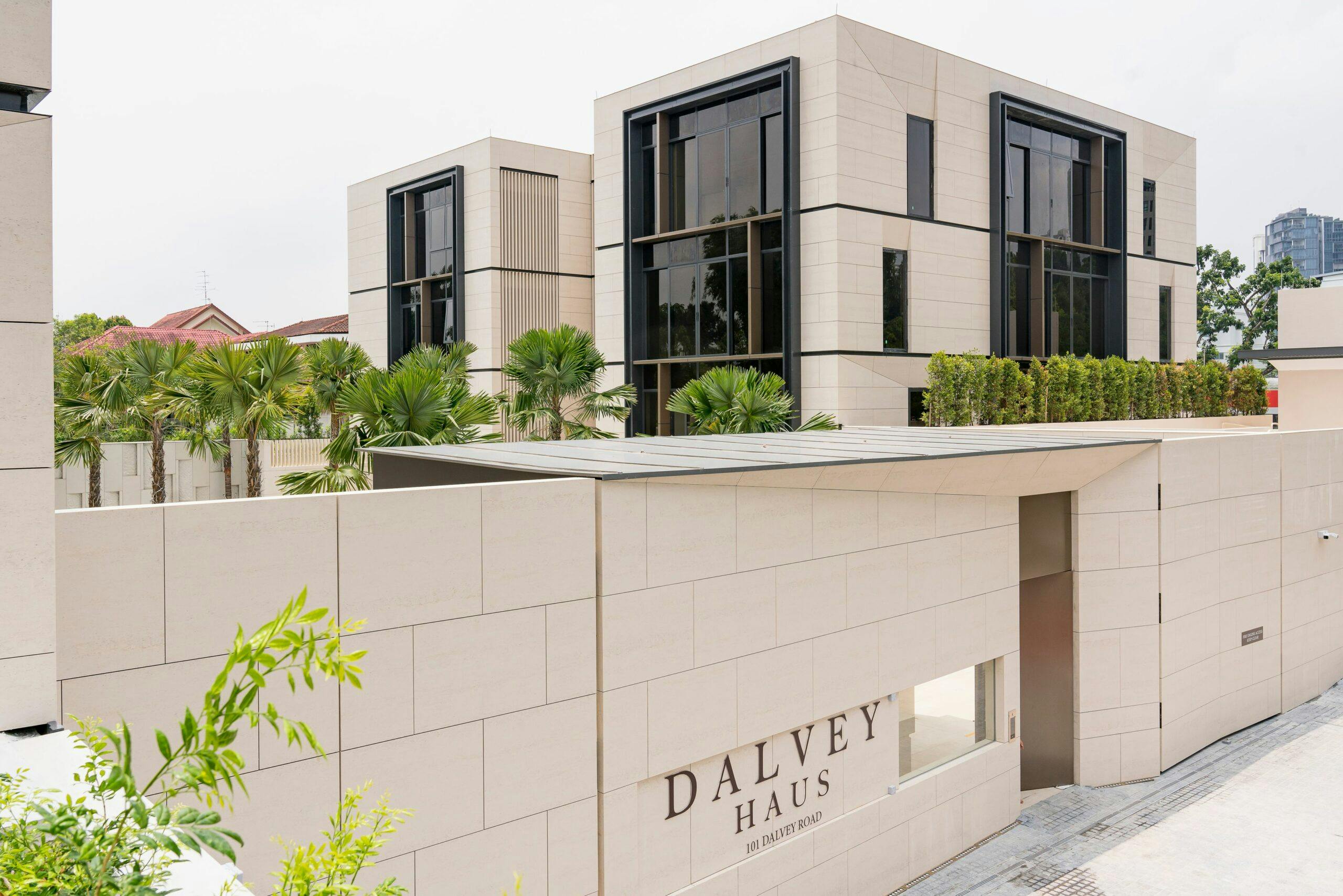
Facade Versatility: From stately rectilinear shapes to breathable skins and fancy faceted volumes, Dekton clads them all
Home » Blog & Events » Facade Versatility: From stately rectilinear shapes to breathable skins and fancy faceted volumes, Dekton clads them all
A building’s facade is equally as important as its interior and landscape design. Beyond aesthetic appeal, a well-designed facade – and in extension, the building’s whole skin – ensures functional aspects such as natural light, ventilation, and energy efficiency. It establishes a visual connection with the surroundings, harmonising the building with its environment. A thoughtfully crafted facade can evoke emotions and set the tone for its interior spaces, influencing how occupants and passersby perceive and interact with the building.
A building’s skin, in most cases, is also its largest surface to clad, which makes the material choice a paramount decision. With its carbon neutrality and near-indestructible quality, it is no wonder that Dekton is a popular sustainable choice for facade cladding around the world. Here we take a look at a few exemplary case studies.
Dekton-clad facade is popular in both smaller luxury residential projects and commercial towers with monumental scale.
In Singapore, architect Eco-id chose Dekton Danae to clad the near rows of volumes flanking a tranquil urban oasis that is the luxury residential project Dalvey House. “Our contractor suggested using Dekton instead of marble to achieve a similar look and feel to that of marble on the facade, but allowing for cost savings and ease of maintenance,” says the Eco-id team.
The material highlights Dalvey House’s clean architectural lines and volumes. The facade features recessed windows strategically placed to create multiple viewpoints framing the green views of the surroundings.
This villa in Malaga, Spain, by architect José Jiliberto features sinuous curves that cut across the horizon to perfectly blend with its Mediterranean landscape. Here, the white Dekton Aeris creates a sumptuous white faceted facade whose delicate look belies its strength and durability to withstand the corrosive salty air.
Located on Abu Dhabi’s Saadiyat Island, Qaryat Al Hidd is a beachfront residential development by Saadiyat Development and Investment Company (SDIC) consists of three zones and 12 buildings housing 1,100 apartments – all clad in Dekton. It is, to date, Cosentino’s largest facade project.
The project features five Dekton colours: Valterra, Sterling, Zenith, Irok and Bento, chosen to create a beige and brown colour palette inspired by the hues of the local landscape.The 40,000 panels required for this project were all cut to size, pre-fitted with accessories, labelled, numbered and shipped from HQ to be precisely installed on site to clad the building’s undulating volume, showing its versatility as material cladding even for organic building mass.
Designed by Swan Housing Group and BLDA Architects, the Streamlight Tower in London is clad with more than 4,600 Dekton panels. Spanning over 9,000 sqm, standing over 269 ft high and with 25 floors of luxury apartments, it cuts a striking silhouette against the London skyline. Its stately industrial-grey bronze skin is a bespoke creation, comprising 12mm Dekton Eter Alberta and Sasea Alberta in ID XGloss finish that helps the building to blend in seamlessly with its surroundings.
We hope this edit inspires you to creatively explore the use of Dekton to skin your building. Follow our Instagram for more inspiration!

 Back
Back